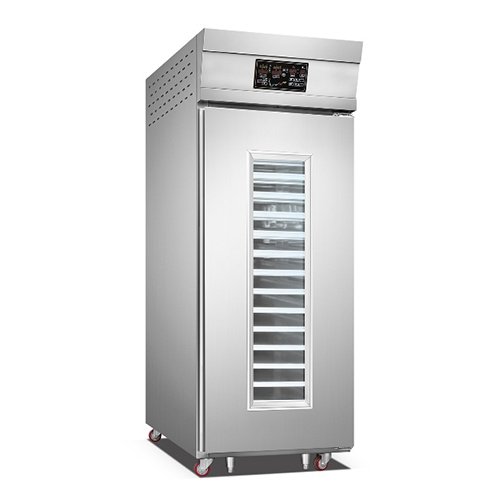Professional Retarder Proofer for Commercial Bakeries
Master Your Dough: The Definitive Guide to Commercial Retarder Proofers
In the demanding world of professional baking, consistency and efficiency are paramount. This guide explores a cornerstone of modern baking technology.
What is a Retarder Proofer?
This advanced equipment offers unparalleled control over your dough. It powerfully chills dough down to -15℃ to slow fermentation (retarding) and then automatically transitions to a warm, humid environment for the final proof, making it ready to bake exactly when you need it.
Where Can This Equipment Be Used?
- Artisan and commercial bakeries
- High-volume hotel kitchens
- Patisseries and pastry shops
- Large-scale catering facilities
- Restaurants with in-house baking
- Pizza restaurants preparing fresh dough
Why Should You Choose a Retarder Proofer?
Enhanced Product Quality
Slow fermentation develops a deeper, more complex flavor profile and a superior crumb structure.
Optimized Labor & Workflow
Prepare dough a day in advance and have it automatically ready for the oven in the morning.
Unmatched Consistency
Automated controls eliminate guesswork, ensuring dough is perfectly proofed batch after batch.
How to Properly Operate the Equipment
- Preparation and Loading: Place your prepared dough onto trays and load them securely into the cabinet.
- Program Setting: Use the control panel to set the desired retarding and proofing parameters.
- Set the Ready Time: Input the time you need the dough to be ready for the oven.
- Initiate the Cycle: Start the automated program. The machine will begin the cooling phase.
- Automatic Transition: The unit will seamlessly switch from cooling to proofing at the correct time.
- Unload and Bake: An indicator will alert you when the dough is perfectly proofed and ready for baking.
What to Consider When Choosing
- ☐ Capacity: Does the tray count align with your peak production needs?
- ☐ Temperature Range: Can it reach required refrigeration temperatures (e.g. -15℃) and optimal proofing temperatures?
- ☐ Space & Dimensions: Have you measured the installation footprint for your kitchen?
- ☐ Build Quality: Is it constructed from durable, easy-to-clean materials?
- ☐ Energy Efficiency: Does the unit feature an energy-saving design?
- ☐ Ease of Use: Is the control panel intuitive for your staff?


